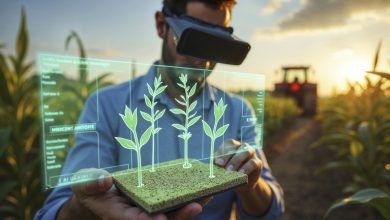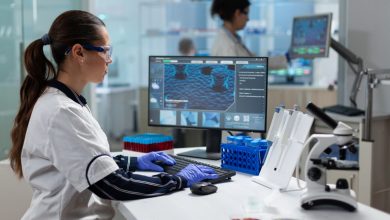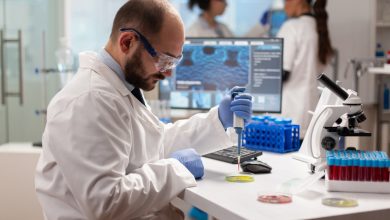NOVAS TECNOLOGIAS
Cientistas do Connecticut estudam nanopartículas para ajudar a desenvolver alimentos resistentes a doenças
Cientistas do Connecticut estudam nanopartículas para ajudar a desenvolver alimentos resistentes a doenças
As farmers fight battles against fungal diseases that can wipe out entire fields of crops, scientists at the Connecticut Agricultural Experiment Station are testing a very tiny solution to the problem.
Using nanoparticle technology, Jason White, vice director of CAES, is hopeful that farmers can more effectively help plants get the nutrients they need to fight diseases.
“When you apply nano-scale copper to the shoots of plants, a lot of copper ends up in their root system and suppresses the diseases,” White said. “It’s just making the plants more healthy.”
What is different about nanoparticles from pesticides, is that the direct application from a spray bottle and size of the particles seems to help keep more of the nutrient in the plant, White said, based on the preliminary findings in the research. Alternatively, a majority of the quantity of a pesticide that is applied to a field of crops will not actually make it to the root system to help ward off disease, White said.
“Think of all of the money that is being wasted (on pesticides),” White said. “We can’t grow enough food to feed the people we have.”
Crops such as tomatoes, eggplant and watermelon will use nutrient copper to help fight fungal diseases. While each plant already has some copper, the plant doesn’t have enough to ward off fungal diseases such as fusarium.
Wade Elmer, a chief scientist of plant pathology and ecology at CAES, is working with White on the nanoparticle fertilizer research and compared crops need for copper to a person who doesn’t have enough vitamin C to fight off a cold.
The person sick with a cold does not have a vitamin C deficiency, Elmer said. They just don’t have enough to fight off the disease. The same is true for plants that can’t ward off fusarium because they do not have enough copper.
“When plants are under stress, they need a lot more of those nutrients,” Elmer said.
Based on the preliminary findings in the research, the nanoparticles are better at helping deliver the necessary nutrients to the plants and keep them healthy despite the presence of fusarium in the soil.
Some of the problems farmers face from fungal diseases are a result of cultural desires for more exotic varieties of plants that haven’t been bred to ward off these fungal diseases, Elmer said.
As part of the experiments, White and Elmer have been applying copper nanoparticles in a solution to tomatoes, eggplants and watermelons. Once the plant is grown, the scientists have broken down the roots to analyze the chemical composition to see if nanoparticles are still in the plant during harvest time.
“Nobody wants to be eating nanoparticles,” White said. “You can never be sure about the safety until you understand the scientific systems.”
The crops grown as part of the experiments have not been eaten, White said, and were grown specifically for the experiments. White said they cannot commercialize nanoparticle fertilizers until they fully understand how the nanoparticles move through the plants and if there’s a presence of nanoparticles still in the plants at the time of harvest at a level that could be harmful to people.
“You should be fairly confident that what you’re going to eat isn’t going to harm you,” White said.
This research is being funded by the U.S. Department of Agriculture.
New Haven Register, 26/12/2016




